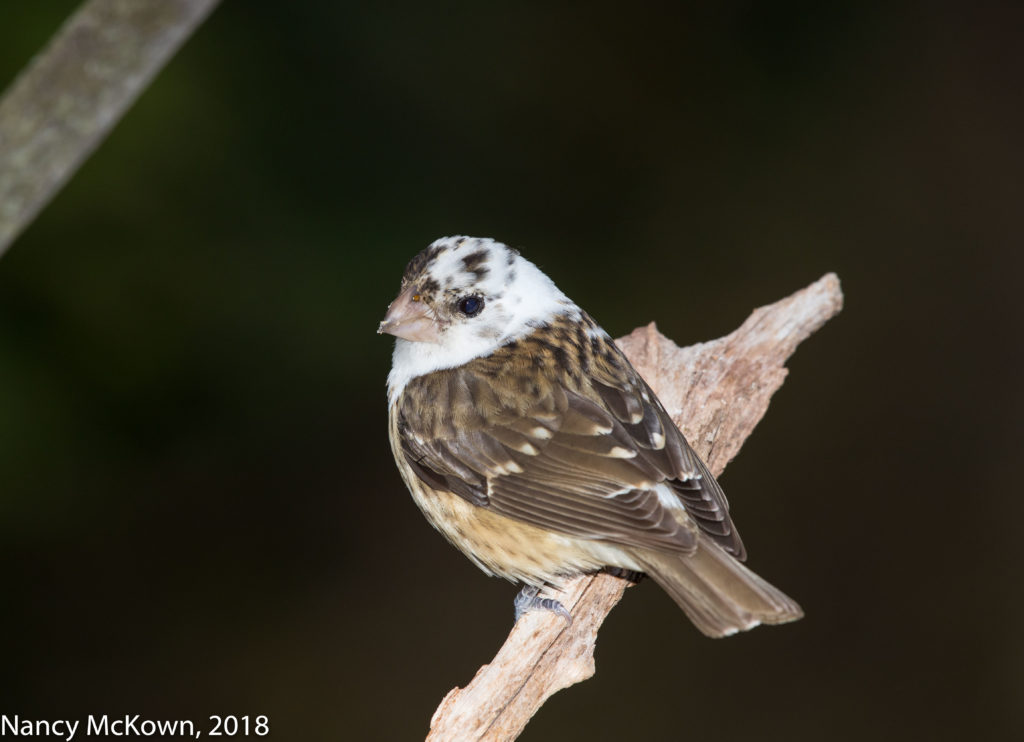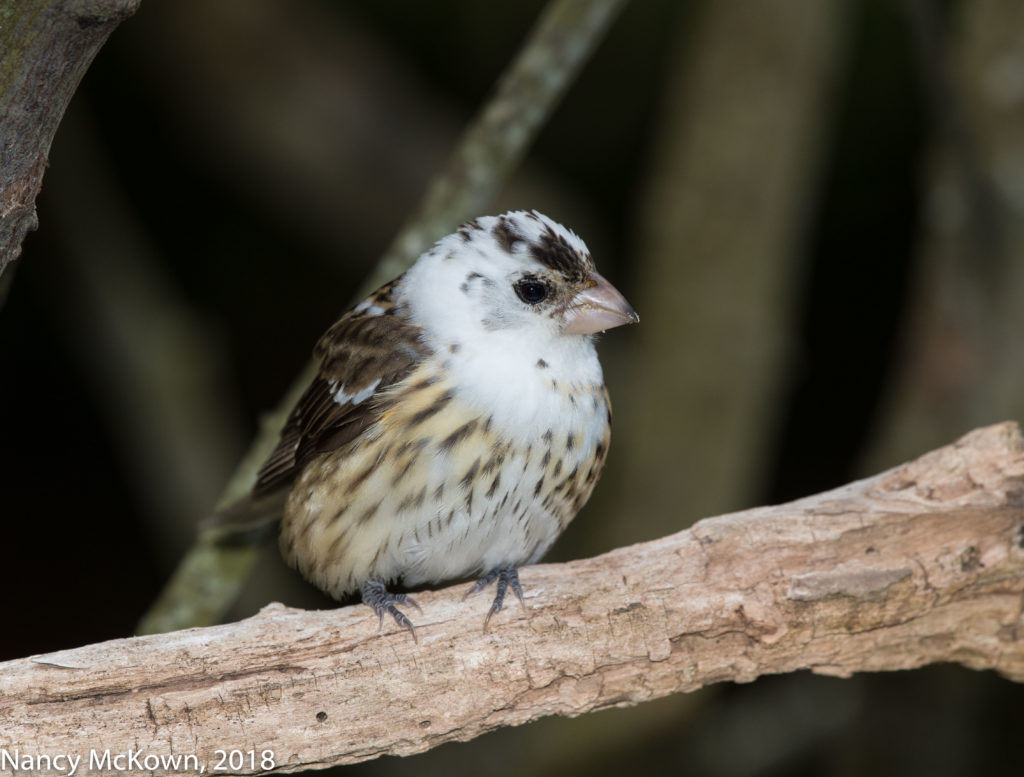Photographing a Leucitic Rose Breasted Grosbeak
This partial Leucitic female Rose Breasted Grosbeak arrived at the feeders with 6-7 other Grosbeaks, but did not stay. I was taken back by those white plumage patches on her head and breast in an otherwise healthy-looking bird. Everything else appeared as it should…. the color pigment in her eyes and legs look the same as other females of her species, her breast had the typical orangy – yellow plumage and her wings and tail feathers were dark. The unusual coloration on her feathers, where some of the color pigment is simply not there, is called “partial leucism”.

ISO400; f/8; 1/250 Second
Albinism is the systemic lack of pigment in the body. An albino bird lacks pigment melanin in all cells, and consequently would display all white feathers, pink legs and pink eyes. In a Leucitic bird, some of the plumage cells are damaged and consequently cannot make the pigment necessary for feather coloration. These individuals generally have the species appropriate color in their eyes and legs and much of the plumage.
It’s All About Light
Just got back from a wedding celebration last weekend, and, as usual, I spent most of my time watching the photographer. Lighting challenges abounded. The ceremony took place on the stage in the main auditorium of a turn-of-the-century Masonic Temple that showcased vaulted ceilings and tall narrow windows. The illumination in this space was mixture of natural, fluorescent, incandescent and spot lights. The photographer and one assistant added no other light…..anywhere in the room. No doubt the color temperature imbalances would throw off the camera’s ability to correctly assess white balance. (My camera’s ISO read ISO4000 – with the aperture wide open at 2.8 and shutter set for hand holding – 1/60th second).
The reception area was in the basement, ceilings around 12 ft high, fluorescent lights, no windows, and 12-15 bright purple uplighting units placed on the floor around the perimeter of the room to illuminate the walls and columns. This lighting concoction was topped off with a spinning disco ball. In this space, the photographer used one on-camera flash…. and bounced that light by pointing it straight up to the tall ceiling. The assistant had been sent home.
My main rule when observing other photographers is to stay the hell out of their way. I have to admit though that it’s hard not to make judgements and, given the lighting challenges and photographer’s choices, be predictive about how those images are going to turn out.

Back to the Birds
When using my flash to photograph this Grosbeak, I mentally considered atmospheric conditions, direction and intensity of ambient light, ambient light in foreground and background, ETTL or Manual flash, quality of flash device, impact of flash extender, distance between lens and bird, and color of plumage. Also in this mix was FEC fine tuning, histogram settings, ISO settings, DOF, and sensor quality. (NOTE: These thoughts generally do not include lighting adjustments that are possible in post processing.)
A Range of Choices
Your skill level comes down to how quickly you deal with many light variables. I start with a couple go-to practices and settings that have worked in the past. #1) The flash gear (flash, extender, battery pack, bracket, and all related sync cables) is attached to my cameras at all times, though not necessarily on. #2) The flash is set to ETTL II… so it can automatically calculate how much extra light is needed. #3) DOF on long fixed telephoto lenses set to a tight aperture…. at least f/8 on my 500mm. ( NOTE: As the ambient light transitions, I rarely stay with these parameters. Also, I use the down time to take and review test shots.)
Perfect, complementary light is a rare luxury when photographing birds in MI. Photographers have to be able to make choices quickly in order to expose what’s hiding in the darkness or just uncover the underlying shadows. Figuring out the precise tweaking to make your images look good takes time and practice. You do have the instant feedback on your camera’s back LCD screen, but that takes your eye off the viewfinder and robs you of opportunities when photographing active and unpredictable birds.
The same is no doubt true for wedding celebrations.








